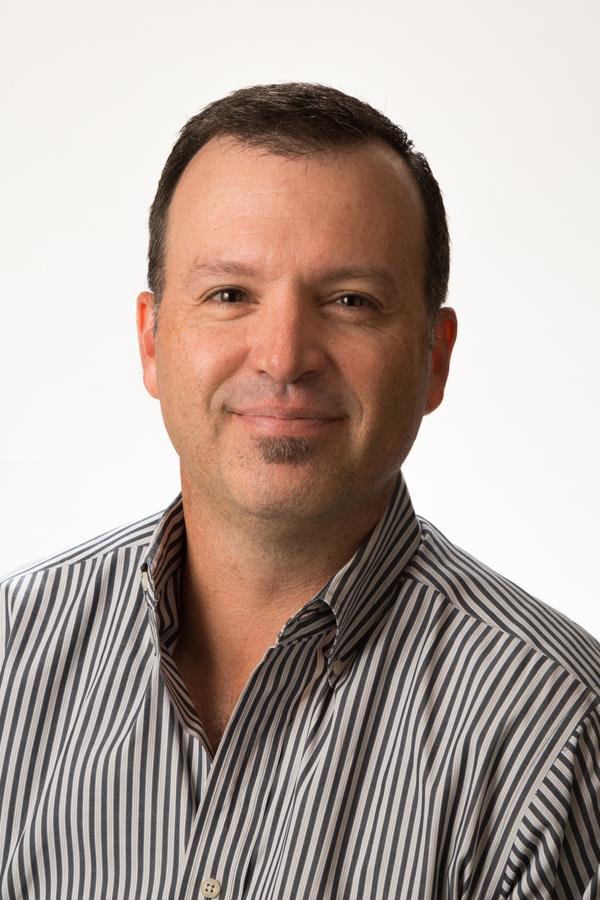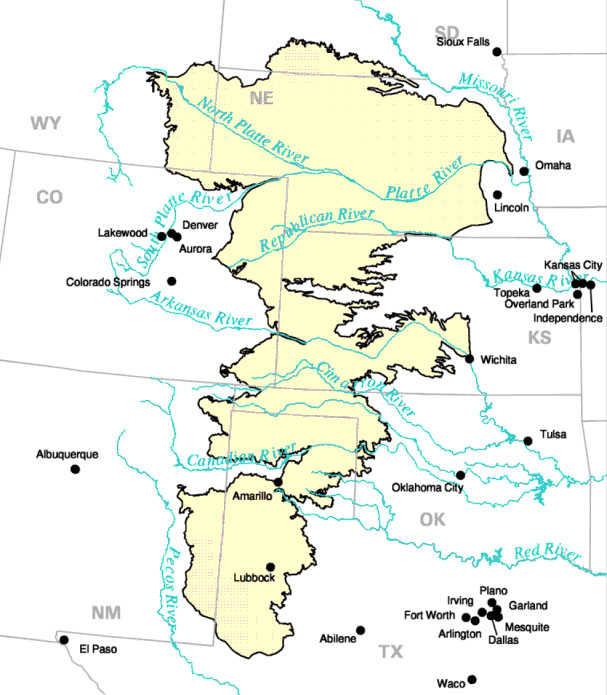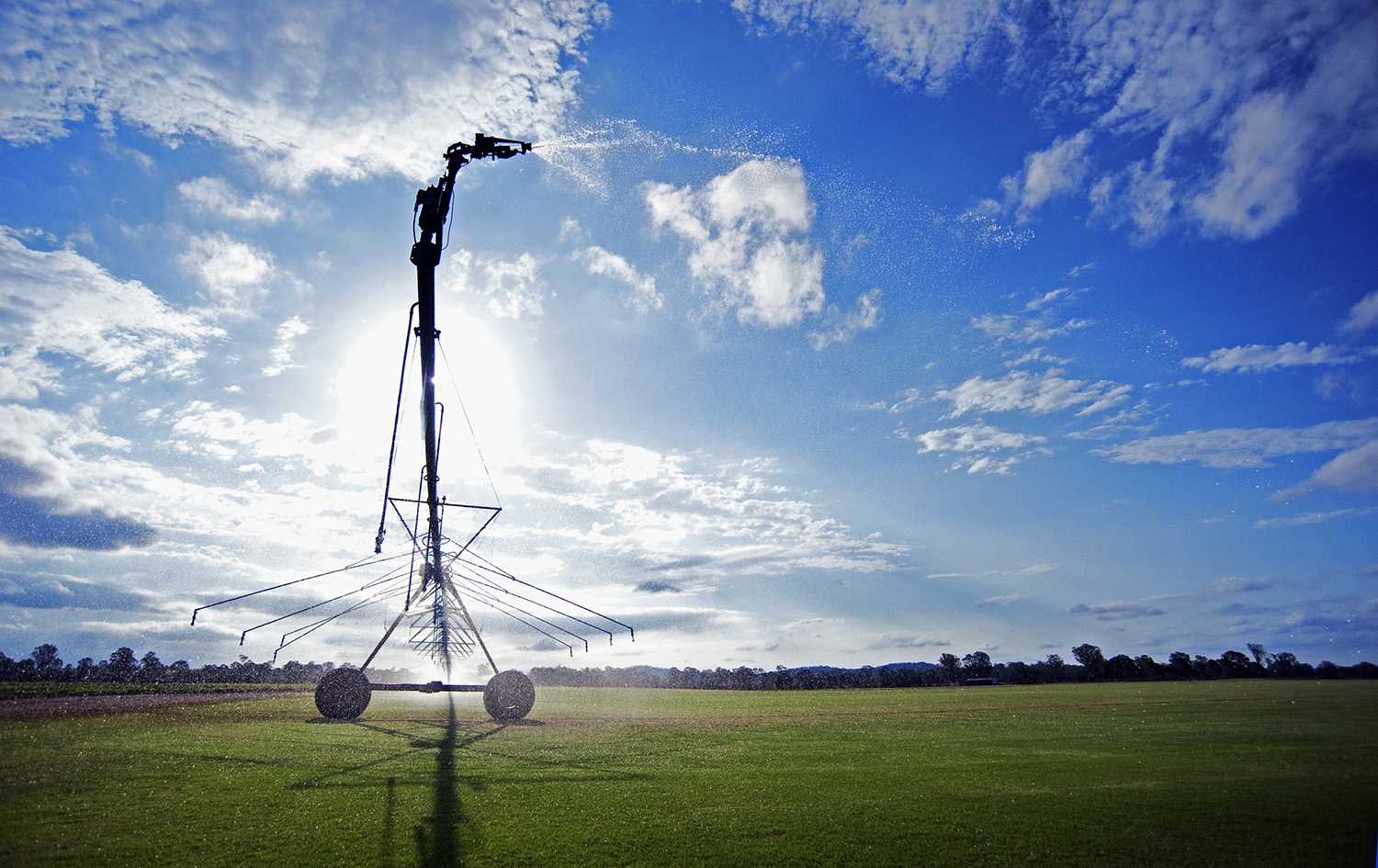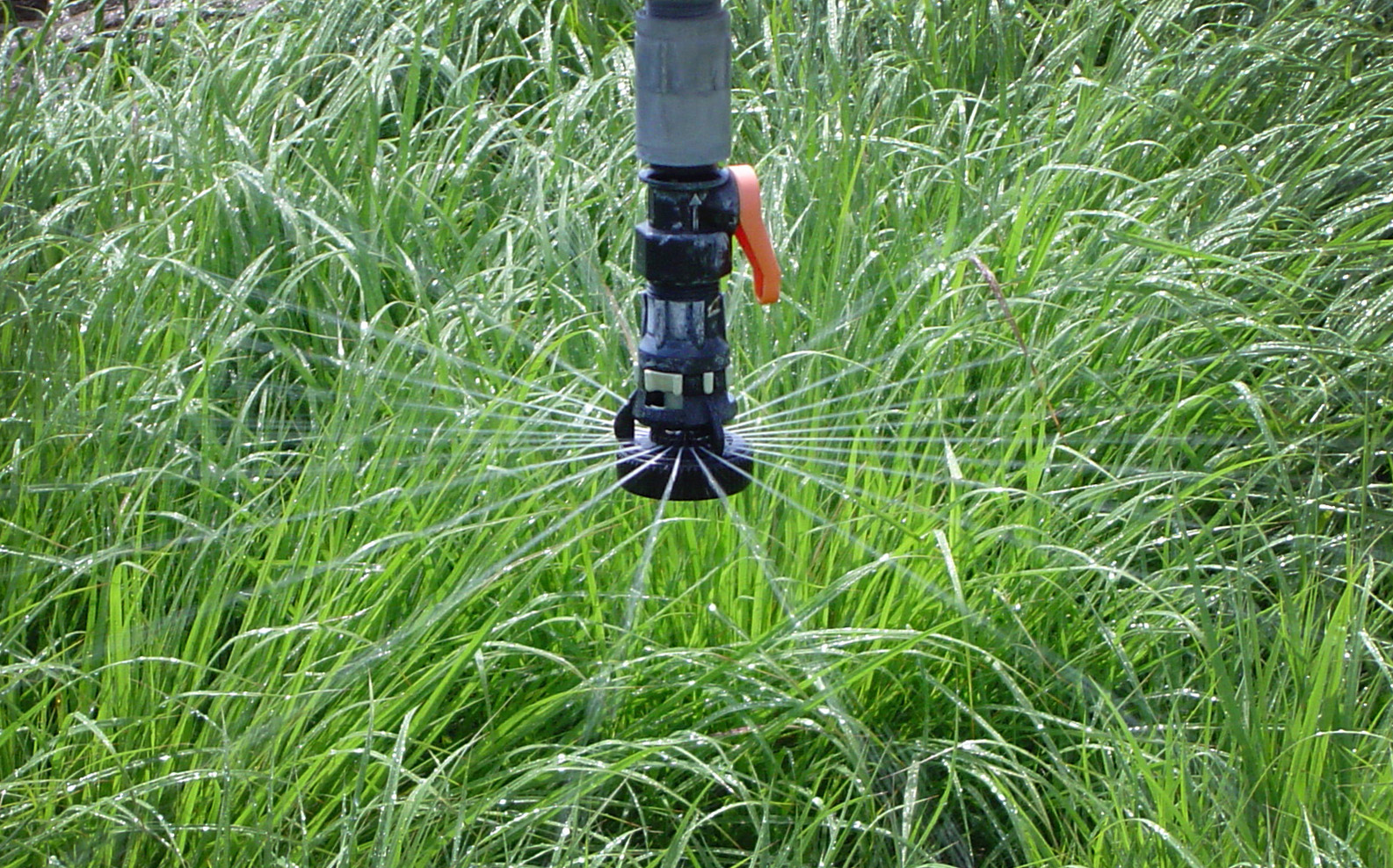Along with doctoral candidate Derrick Holland, Coy Callison examined how experience and ideology play roles in effective messaging of water conservation.
On the wall of his office in the College of Media & Communication, Coy Callison has a picture of his grandfather, H.C. Callison, from whom Coy Callison got his name and who spent his career drilling water wells for people all over the South Plains and Permian Basin.
Later in life, Callison married into a farming family, again coming face-to-face with an industry dependent on water.
So it should be no surprise that, even as a professor and associate dean of graduate studies, Callison has an interest in water. But instead of delving into the scientific or agricultural aspects of water issues, Callison is more interested in water messaging and the most effective methods to deliver those messages.
That is where his recent research is focused. Along with Derrick Holland, a soon-to-be graduate of Texas Tech University who will begin his career this fall on the faculty at the University of Tennessee, Callison investigated how political ideology and past experiences with water impacted attitudes and behaviors toward the issue of water scarcity. Their findings were released in the article, "Impact of Political Identity and Past Crisis Experience on Water Attitudes" published by the Journal of Contemporary Water Research and Education.

"What we found is that people who vote more on the side of politically liberal ideology are generally more supportive of water scarcity being an important topic," Callison said. "They believe water scarcity messages are real; aren't the people who deny the science behind it and see it as something that we need to take advantage of. People who vote more under conservative banners typically are a little bit more dismissive of water scarcity as an issue, don't trust the data necessarily, don't trust the stories that come out about it and see themselves as less prone to want to conserve water in the future."
But where it gets interesting, and where it is of particular interest in an area such as West Texas, which constantly deals with drought conditions and water scarcity, is the impact of experience with water scarcity issues. Callison said of those surveyed for the study, people who have had direct experience with water scarcity are less likely to follow their political ideology and instead trust what they've experienced.
What Callison and Holland sought were the most effective means of messaging water scarcity regardless of political ideology and regardless of whether experience plays a factor.
Agricultural focus
People within the City of Lubbock normally deal with water conservation in terms of how often they are allowed to water their lawn or how much they are encouraged to take shorter showers, wash their car less frequently or fill up their swimming pool.

But, Callison said, that represents only a fraction of the water usage picture on the South Plains. About 90 percent of the water usage from the Ogallala Aquifer, he said, is used by farmers for irrigation purposes. So water conservation messaging should target farmers, who will feel the biggest impact if water runs out.
With funding from the Mitchell Foundation, Callison and Holland launched a study where 132 farmers were shown videos of fellow farmers discussing the impacts of water scarcity on agriculture. While watching these videos, farmers gave feedback as to what messages they did not like and which ones resonated with them.
The data showed that, for farmers, there are three appeals that resonate in terms of showing a desire to conserve water. The first, and most obvious, is the economic impact conserving water will have for farmers. Quite simply, if the water runs out, they can't grow crops, and their livelihood disappears.
The second appeal is what Callison called the heritage impact: if water is not conserved and the farm goes away, then it cannot be passed down to the next generations of farmers.
Then, the third appeal is that of being stewards of the land and taking care of that which supports you, which Callison said most farmers identify themselves as anyway.
"On the whole, I can tell you that the economic frames resonate pretty broadly," Callison said. "The heritage frames, and this totally makes sense, seem to have a little bit more impact on farmers who have children. So, younger farmers who don't have any kids yet, it's not on their radar but it probably will be as they become older."
Callison and Holland also discovered that the most effective type of messaging is through testimonials and not graphs or charts. While testing farmers, they were shown graphs of water scarcity issues, and the dials were turned to show those as unfavorable while videos showing farmers discussing water scarcity issues resonated highly.
"The reason I think that's important is because the graphics are exactly how a hundred percent of content is being created right now," Callison said. "You talk to someone who does layout for the United States Department of Agriculture (USDA) and they're somewhere, right now, creating this new graphic that's supposedly going to work great. But this is an emotionally charged issue. You can see it in people's faces.
"So what you need in this type of messaging is to have people who were living it as part of your messaging. It's a personal topic, on a personal level. This data has shown that as well."
Experience vs. ideology
Because the surveys of individuals and their water conservation views were anonymous, Callison said they felt they would get a good cross section of people on both sides of the issue.
But coming out of the survey, it was obvious that experience with water scarcity seemed to take precedence.
"Ideology and experience are both important, but the one I think that I'm more interested in right now is experience because it seems that experience may be able to override politics," Callison said. "Political ideology is the most pressing individual trait absent of scarcity experience, but when scarcity experience kicks in then it becomes a driver. It's a little bit difficult to untangle them, but to me that's the one that's most interesting right now."
And experience can work both ways. It's difficult to tell someone who lives in a rainforest that water is a scarce commodity. Callison even related a story from a meeting with a water district manager in Honolulu, Hawaii, who said he is dealing with water scarcity issues on the island because, even though it rains frequently, the water quickly runs through the porous rock of the island and into the ocean, and there's no way to effectively capture that rainwater before it seeps through.

On the other hand, in a semi-arid region like West Texas, water scarcity is a real issue and has been for quite some time. So belief in the issue is more likely here because of the experience factor. The question remains, however, as to how to effectively craft the messaging to encourage water conservation.
"We found that if you're talking about things that people should do about water concerns, what we call immediate water concerns, then you have to frame that in a very positive type of discussion," Callison said. "You can't do it fear-based. If you tell people, 'if you don't conserve water today, we're all going to die tomorrow,' that doesn't work. But for future messages, you can say, 'Look, we've got plenty of water right now, but in 20 years, water is going to be a real issue.' The most effective type of strategy when you talk about future water resources is a fear tactic. So the current water message should always be talked about in terms of positive attributes."
Callison said the difficulty comes in that those two types of approaches can tangle up how the message is produced and delivered. That's where the next step in the research comes in.
Future of water messaging
At the moment, he is looking at agricultural practices on the South Plains and what type of messaging might be most effective in promoting water conservation. The next step will then be to create that messaging and have it distributed and tested to determine its effectiveness.
From there, Callison also would like to delve into residential water conservation messaging.

"How do you convince non-agricultural water users, municipal water users,
whether that's homeowner residential users or that's local businesses, what kind of
tactics and messaging do you use to influence them?" Callison said. "We have some
evidence here that economic frames and heritage frames work with farmers. What kind
of frames work with a local homeowner?"
Callison said referents could drive the frame that works with residential users – who is the most important reference in your life that you want to try to please by being conservative with water, whether it's a spouse, parent, child, or whomever. There's also the difficulty of convincing those who still do not believe in the science or data that shows water is scarce. What should that message be?
"If people out there are skeptical of water science, then what do I have to do to engage in a meaningful conversation about water scarcity? Callison asked. "You can't just dismiss it. We know there's a significant portion of population who feel this way. What message is most effective to getting them on the side of turning the water off when they brush their teeth, or whatever that may be?"
Originally published March 29, 2019 Texas Tech Today
